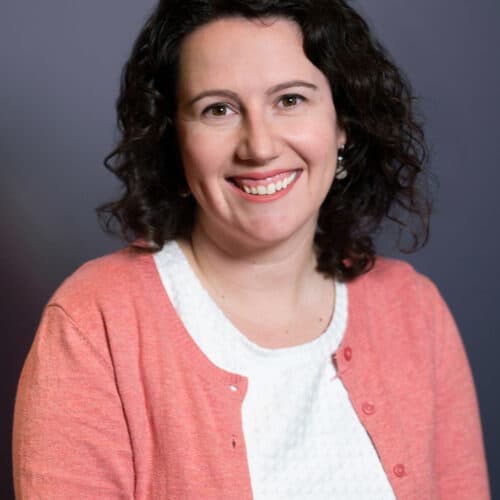Lauren Atlas, PhD, is a Clinical Investigator at the National Institutes of Health (NCCIH, NIMH, NIDA) in the United States. Her specialty is pain neuroimaging, psychology, and placebo analgesia and has been in the pain field for 14 years. Lauren has been an IASP member for the last two years and has attended one World Congress.
How did you get into pain science? Did you always know it was what you wanted to do or did you start somewhere else?
I started out interested in affective science and emotion more broadly, as I was particularly drawn to the study of emotion and mood disorders. But I felt that the stimuli we used in studies of emotion were limited and highly subjective, and that we weren’t getting insight into the basic mechanisms of how the world is shaped by the altered expectations patients with affective disorders bring to the table. Studying acute pain was compelling because we could objectively manipulate the noxious stimulus and measure how psychological factors like expectations influence how it is ultimately perceived. In addition, pain affects every level of the nervous system and the circuits that process pain are well characterized, so we can ask at what level our interventions shape responses, from decision-making alone to the earliest levels of nociception. Finally, as I’ve learned more about health disparities in pain and the opioid crisis, I feel a responsibility to ask questions that can directly impact these areas and have positive effects for society. For all of these reasons, pain continues to be the most compelling research area I can imagine.
What has been your biggest professional challenge/obstacle thus far and how did you handle it/overcome it?
Starting my lab at the NIH was definitely a challenge! I am fortunate to have built a wide network of supportive friends, colleagues, and mentors, and I definitely reached out all the time when I had questions or needed advice. I also formed new connections with mentors at NIH to get advice on navigating the complex new environment. It took a while to get off the ground, but once I recruited fantastic trainees and could build the lab culture I believe in, I started to feel like a real PI. Most of the time J
Why did you become an IASP member?/ Why are you an IASP member?
To support IASP efforts and Special Interest Groups (SIGs)
What is your favorite member benefit?
Access to the journal, PAIN and supporting the pain research forum, which is an essential resource for pain researchers, especially trainees.
What do you do in your spare time? Do you have any hobbies, other pursuits, or hidden talents?
My surprise hobby is that I love to dance samba. My favorite teacher is in New York, but luckily we now have zoom classes! An upside to the pandemic. I also relearned how to ride a bike after about 25 years. Turns out you do forget! But I’m really enjoying long bike rides on the trails surrounding DC.
Do you have a favorite account to follow on social media—for science or other topics?
I follow >1700 accounts so it’s hard to choose a favorite! I’m proud of convincing Tor Wager (@torwager) and Yarimar Carrasquillo (@yarcarlab) to join twitter. My twitter tips are to follow comedians in addition to scientists so your thread doesn’t get too dry, to reflect on twitter controversies as a way of learning what’s hot in the field without getting intimidated or discouraged (some voices are louder on twitter but this doesn’t mean people know what they’re talking about – this is especially important for trainees), and to feel free to interact with whoever you want, it really is a democratic forum.
Interested in becoming a member of IASP?
With your IASP membership, you gain access to:
- PAIN Journal
- Pain Education Resource Center (PERC)
- Access to 24 Special Interest Groups (SIGs)
- Online Career Center access
- Discounts on World Congress
- Network of thousands of pain researchers from around the world!
Membership dues are determined by income, the rates of membership can be found at this page of our website.


